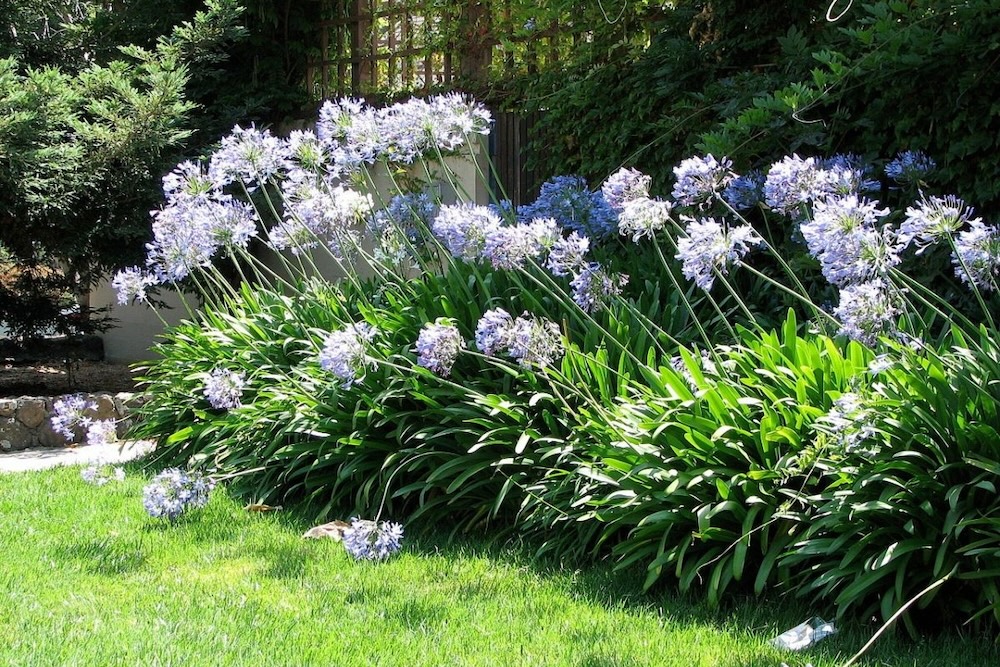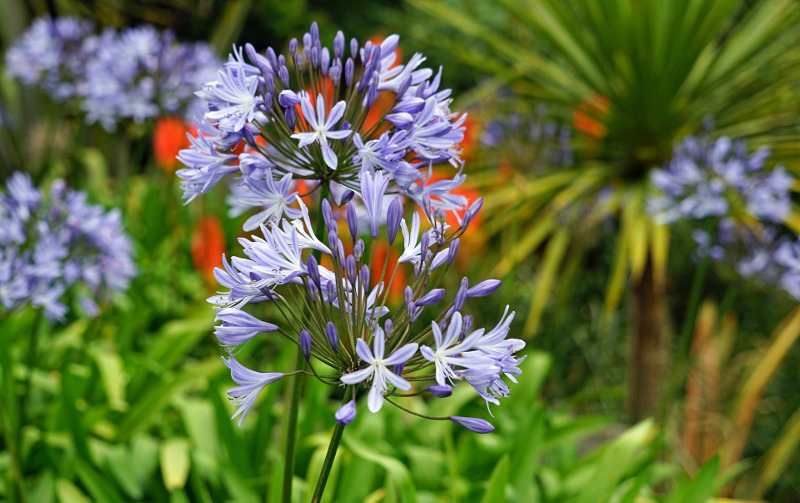Agapanthus Care Tips for Lush and Vibrant Flowers
Agapanthus Care Tips for Lush and Vibrant Flowers
Blog Article
Letting Loose the Secret to Successful Agapanthus Cultivation: Advice for a Flourishing Garden
In the world of gardening, growing agapanthus efficiently requires a calculated technique that incorporates numerous facets of plant treatment. By recognizing the subtleties of agapanthus growing, one can create a setting where these plants flourish and flower generously.
Growing Agapanthus: Finest Practices
When planting Agapanthus, correct dirt preparation is vital for making certain effective development and growth of these attractive blossoms. Agapanthus, frequently referred to as Lily of the Nile or African lily, prospers in well-draining soil with a slightly acidic to neutral pH degree - Agapanthus. Prior to growing, it is essential to modify hefty clay dirts with raw material such as garden compost or peat moss to improve drainage and provide essential nutrients for the plants
To plant Agapanthus, pick a location that receives full sunlight to partial shade, as this will certainly advertise healthy growth and abundant flowering. Dig a hole two times the size of the plant's origin ball and place the Agapanthus at the very same deepness it was previously expanding. Gently backfill the opening with dirt, weighing down strongly to eliminate any kind of air pockets around the roots.
Water the newly planted Agapanthus extensively and continue to maintain the soil evenly damp, particularly throughout the plant's energetic growing season. Agapanthus. Applying a well balanced fertilizer once a month can further sustain the plant's growth and blooming. By complying with these finest techniques for planting Agapanthus, you can produce a magnificent display of these exciting flowers in your yard
Ideal Soil Conditions for Agapanthus
For optimal development and blooming success of Agapanthus plants, making certain the dirt conditions are ideal is critical. Agapanthus prefers soil that is abundant in nutrients, so integrating a balanced fertilizer throughout the growing period can promote healthy development and lively blossoms.

Watering and Feeding Tips
To guarantee healthy development and lively blossoms, proper watering and fertilizing techniques are important for successful Agapanthus farming. Agapanthus plants benefit from regular watering, specifically during the growing period.
When it comes to fertilizing Agapanthus, a well balanced plant food with equal parts nitrogen, phosphorus, and potassium can be applied in the spring to promote healthy growth and flowering. Slow-release plant foods are perfect for offering nutrients gradually over an extensive duration. Stay clear of over-fertilizing, as this can result in too much vegetation growth at the expense of flowers.
Furthermore, incorporating natural matter like compost into the soil can enhance nutrient degrees and boost soil structure, assisting in the news general health and wellness of the Agapanthus plants. By complying with these watering and fertilizing tips, garden enthusiasts can ensure their Agapanthus plants flourish and generate magnificent displays of blossoms.
Pruning and Deadheading Methods
Proper pruning and deadheading techniques play a crucial function in preserving the wellness and aesthetics of Agapanthus plants, enhancing the necessary methods of watering and fertilizing for effective farming. Pruning Agapanthus involves eliminating invested blossom heads, yellowing or dead leaves, and overall shaping of the plant to promote better growth. Deadheading, the process of removing faded flowers, not only improves the plant's appearance yet likewise motivates more blooming.
When deadheading Agapanthus, it is recommended to trim off the flower stem at the base using sharp, clean shears. This procedure redirects the plant's power from seed manufacturing back into origin and vegetation growth, advertising a healthier and more durable plant. Normal deadheading can extend the growing period of Agapanthus and prevent self-seeding, which can result in congestion.
In regards to pruning, Agapanthus usually benefits from a light trim after flowering to clean up the plant and urge fresh development. Cutting back the spent blossom stems and removing any type of damaged or dead vegetation assists maintain the plant's vigor and overall look. Nevertheless, it is important to stay clear of cutting into visit the site the crown of the plant, as this can deteriorate its health.

Protecting Agapanthus From Pests and Diseases
Implementing reliable bug and illness monitoring methods is critical to securing the health and wellness and vitality of Agapanthus plants in farming. Agapanthus are generally sturdy plants, yet they can still drop target to various insects and illness otherwise effectively looked after. One typical parasite that influences Agapanthus is the Agapanthus borer, a caterpillar that tunnels right into the plant, causing damage to the flowers and fallen leaves. To avoid problems, regular examination of the plants is important. If borers are identified, they can be manually eliminated, or insecticidal soap can be made use of as a control step.
Along with bugs, Agapanthus are susceptible to diseases such as origin rot and fungal leaf places. These concerns can typically be protected against by making certain appropriate drainage a knockout post and avoiding overwatering. If signs of condition show up, affected components of the plant need to be quickly eliminated to stop further spread. Fungicides might also be used as a treatment step, adhering to the producer's instructions very carefully. By remaining cautious and attending to insect and condition issues promptly, garden enthusiasts can help their Agapanthus thrive and grow.

Conclusion
To conclude, successful growing of agapanthus needs correct growing strategies, ideal dirt problems, appropriate watering and fertilizing, routine trimming and deadheading, and protection from insects and conditions. By complying with these tricks and tips, garden enthusiasts can guarantee a growing yard loaded with attractive agapanthus blooms. Agapanthus. Remember to keep constant treatment and interest to detail to promote the health and long life of these magnificent plants
When planting Agapanthus, appropriate dirt prep work is important for guaranteeing effective growth and development of these gorgeous blossoms.Water the recently grown Agapanthus extensively and continue to keep the soil equally damp, particularly during the plant's energetic expanding season.For ideal development and flowering success of Agapanthus plants, making sure the soil conditions are ideal is essential. When transplanting or planting Agapanthus, ensure the dirt is well-prepared to provide the essential foundation for the plants to develop themselves efficiently. One typical bug that influences Agapanthus is the Agapanthus borer, a caterpillar that tunnels right into the plant, creating damage to the blossoms and leaves.
Report this page